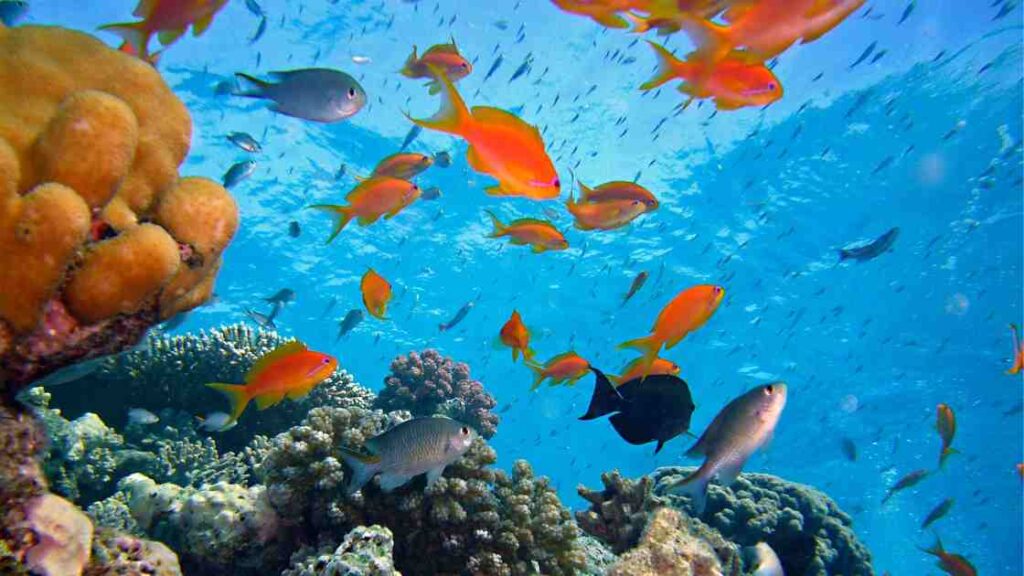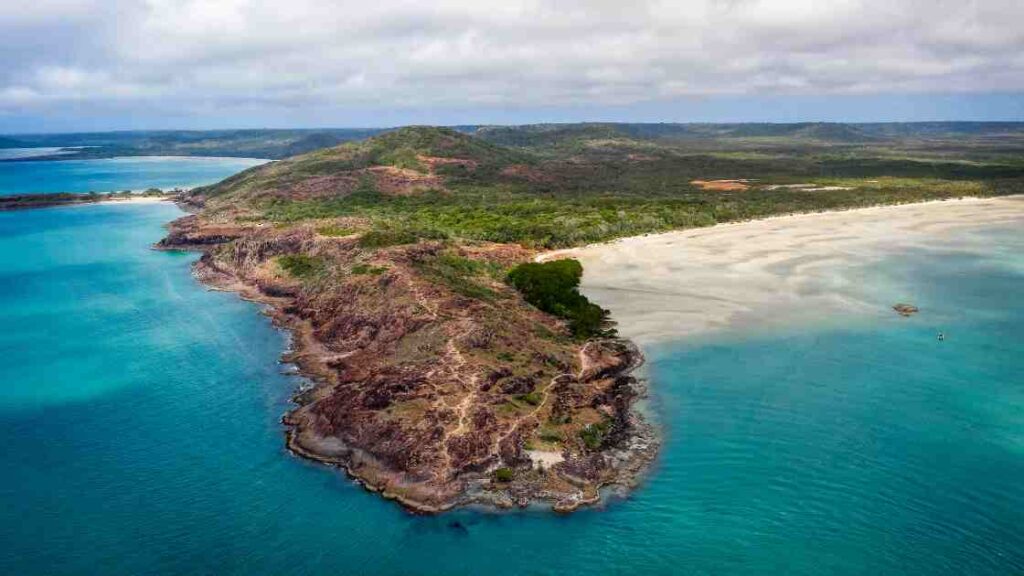Prepare to enter an amazing world of information about the captivating landscape of Australia! Australia is more than just the stunning scenery and amazing wildlife. This unique nation is filled with fascinating facts that will make your jaw drop to the floor. In this article, we will reveal 15 fun facts about Australia that are sure to stimulate the interest of your guests and awaken your curiosity.
Table of Contents
Macquarie Island is home to the majority of penguins.

Macquarie Island is located in the southwest Pacific Ocean, almost halfway between New Zealand and Antarctica. Politically, it has been a part of Tasmania, Australia, since 1900 and is a region of Oceania.
It was made an official Tasmanian State Reserve in 1978, and it was designated a UNESCO World Heritage Site in 1997. Up to 1993, when the municipality was combined with neighboring municipalities to form Huon Valley Council, it was a part of Esperance Municipality.
The whole population of royal penguins congregates on this island during the breeding season. The island is a crucial component of the tundra ecoregion of the Antipodes Subantarctic Islands.
It is believed that there are over 15 odd creatures in Australia

Although animals across all of the Americas, Europe, Asia and Africa have traveled large distances in the past and through a variety of major climate shifts, it isn’t an alternative to Australian species.
This is why a lot of the species in this place have unique characteristics and survival strategies.
Some of the most bizarre animals in Australia include: Tiny Pouch Babies, Koala Crisis, Antechinus, Monjon Australian Bustard Sawfish, Pygmy Rock-wallaby, Plains-wanderer, Western Gobbleguts Rakali, Euro, Woylie, Pademelon, Giant Panda Snail, Mulgara, Common Spotted Cuscus and Angasi Oyster.
World’s largest coral reef

Have you heard of the Great Barrier Reef? Yeeess! you guessed it right! It is the world’s largest coral reef. Over 2,900 islands and reefs make up the the great barrier reef, which spans around 344,400 square kilometers.
The coral reef is situated in the Coral Sea, off the coast of Queensland, Australia. It is separated from the ocean by a channel.
Great Barrier Reef Great Barrier Reef can be observed from space and is the largest single structure constructed by living things.
The structure of the reef is composed of and is constructed by billions of tiny creatures that are known as coral polyps. It became a World Heritage Site in 1981 and is home to a wide variety of species.
CNN listed it as one of the seven natural wonders of the world in 1997. Australian World Heritage places included it in their list in 2007.
It was also included in the list of Australian World Heritage sites. Queensland National Trust declared it a state symbol of Queensland in 2006.
The 19th century was the earliest time Australia was most famously known as New Holland

Australia’s continent was formerly referred to as New Holland by Europeans. Abel Tasman, a Dutch sailor, was the person who gave Australia its first name in 1644.
Even before its shoreline was discovered, the name was chosen in time to be included in the bulk of European maps depicting the sought “Southern land” or Terra Australis.
Up until at least the middle of the 1850s, New Holland was still used to refer to the entire landmass in semi-official and common contexts.
Indigenous Australians comprise two groups

The first category is one of Aboriginal people. Aboriginal Australians are the many Indigenous groups residing on the Australian mainland as well as numerous Islands, with the Torres Strait Islands being an exception.
These islands include Tasmania, Fraser Island, Hinchinbrook Island, the Tiwi Islands, and Groote Eylandt. Aboriginal Australians comprise many distinct peoples that have been living in Australia for more than 50 years.
The other category is that of the Torres Strait Islanders. The Indigenous Melanesian people of Queensland Australia are known as Torres Strait Islanders.
In a way, Torres Islanders are ethnically distinct in comparison to the Aboriginal people who live in the remainder of Australia. They are typically grouped to be Indigenous Australians.
Currently, there are more Torres Strait Islanders living on Australia’s mainland than on the islands.
Whitsunday Islands are the most sought-after and visited islands in Australia

The Whitsunday Islands are a group of 74 islands of varied sizes located 900 kilometers (560 miles) north of Brisbane in Australia’s Central Queensland.
The village of Bowen is located off the coast on the islands that are the furthest north. Proserpine is located offshore of the southernmost islands.
The commercial hub of this island group, which is situated on Whitsunday Island, is Hamilton Island.
The Ngaro and Gia peoples, whose Juru people hold the sole legally recognised title of indigenous name in the Whitsunday Region, are the owners of the land.
Ayers Rock is the most well-known monolith of sandstone.

Ayers Rock is also called Uhulu. Since the 1930s, Uluru, one of Australia’s most well-known natural features, has grown in popularity as a travel destination. Uluru is in addition one of the most important native locations in Australia.
It is a huge Sandstone formation in the middle of Australia. The formation is located 335 kilometers southwest of Alice Springs in the Southern Northern Territory.
Uluru is considered sacred by the Pitjantjatjara Aboriginal people living in the area who are known as the Anangu. The area surrounding the formation is filled with an abundance of waterholes and springs caves in the rock, as well as ancient paintings.
Uluru is designated as an UNESCO World Heritage Site. It is the major attraction of Uluru-Kata tjuta National Park.
Australia does not have any formal language!
Have you heard of a nation that has no officially recognized language? Today, we are reporting breaking news that Australia is the only country with no official language despite being an official language that is a democratic one.
Even though the British Colonial colony was colonized by Australia, Australia did not adopt the English language of Britain because other British colonies like Nigeria and Kenya used the language.
Overall in the end, English is the official language of the nation. Australian English is a major language with distinct accents and lexicon. It differs from other versions that are English in the grammar as well as spelling. General Australian serves as the normal dialect.
In the census of 2021, English was the sole language spoken by 72 percent of the people. The other languages commonly spoken in Australian homes are Mandarin (2.7 percent), Arabic (1.4%), Vietnamese (1.3%), Cantonese (1.2%) and Punjabi (0.9 percent).
Australia has no state religion
Section 116 (section 116) of the Australian Constitution prohibits the federal government from passing any law to create any religion, to regulate any religious ritual or restrict the free practice of any religion.
2021 Census classified 38.9% of the population as “no religion”. This number was only 15.5 percent in 2001. The most popular faith is Christianity (43.9 percent). The biggest Christian religious denominations are The Roman Catholic Church (20%) and the Anglican Church of Australia (9.8 percent).).
Multicultural migration after the Second World War has led to the rise of non-Christian faiths like Islam (3.2 percent), Hinduism (2.7%), Buddhism (2.4%), Sikhism (0.8%) and Judaism (0.4 percent).
Australia is the home of diversity of culture
This is due to its long history of the immigration. In the years since 1788 Australian is mainly one of Western cultures that was heavily in the direction of the early Anglo-Celtic settlers.
Other influences are Australian Aboriginal culture, the traditions brought to Australia by waves of immigrants from around the globe as well as the culture of American culture. United States.
The divergence in culture and the evolution that have occurred through the centuries since European arrival has resulted in the distinctive Australian culture.
Health is an area of concern in Australia

Australia’s life expectancy is 83 years. It is the fifth highest in all of the globe. It is home to the highest percentage for skin cancer in the world.
In addition, smoking cigarettes is the leading avoidable reason for death or diseases that accounts for 7.8 percent of the total deaths and diseases.
The second most-cited cause in the list of preventable causes is hypertension (7.6 percent), and obesity is at third with 7.5 percent.
In 2012, Australia ranked 37th in terms of its percentage of overweight women, and near to the top of the developed world for the proportion of obese adults.
Nearly 63% of the people over the age of 18 are either obese or overweight.
The majority of the populace is composed of elderly

Aging populations pose both fiscal and social issues for all countries in the globe. Similar to other developed nations, Australia is experiencing a change in the demographics of its population. Now there are more retired people and fewer in working age.
In 2018, the median lifespan of the Australian populace was 38.8 years old. According to a data from the year 2015, 2.15 percent of the Australian population lived abroad. This percentage is one of the lowest percentages in the world.
Australia is very urbanized
67 percent of people are located in areas of the Greater Capital City Statistical Areas at the time of the year 2018. Metropolitan cities with a population of more than one million people are Sydney, Melbourne, Brisbane, Perth and Adelaide. And did you know that Australia has eight capital cities? Sydney, Brisbane, Melbourne, Canberra, Adelaide, Hobart, Darwin and Perth!
Australia’s mixed-market economy with high-income is wealthy in natural resources

It is the 13th-largest country in the world by nominal measures and 18th largest by PPP. In 2021, it is the second highest amount of wealth per person, following Luxembourg. Additionally, it is the 13th highest amount of financial assets per person.
Cape York Peninsula is the largest wilderness unspoiled in northern Australia

The terrain is mostly flat, and around half the land is used to graze cattle. The eucalyptus-wooded savannas that are tropical rainforests, as well as different types of habitat are being protected and recognized because of their importance to the global environment.
Conclusion
In the end, Australia is a fascinating country and has an array of distinctive qualities and experiences. From the amazing natural wonders such as Uluru and the Great Barrier Reef, to its stunning natural wonders like Great Barrier Reef and Uluru and its diverse fauna, which includes koalas and kangaroos, Australia offers endless opportunities to explore and experience.
These 15 fun facts about Australia -including having the world’s biggest population of wild camels as well as being the home of the longest fence on Earth- adds to its appeal.
If you’re fascinated by the rich Aboriginal culture, the lively cities such as Sydney and Melbourne and the laid-back beach life, Australia is a destination that never fails to amaze and beguile.
Also Read: 15 Best Caribbean Islands To Visit In 2023

